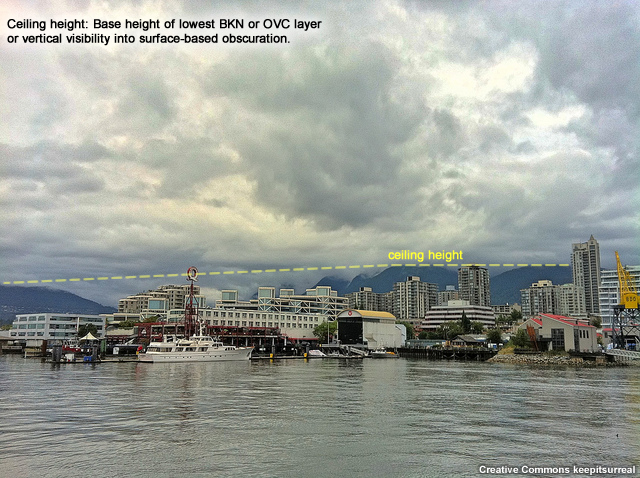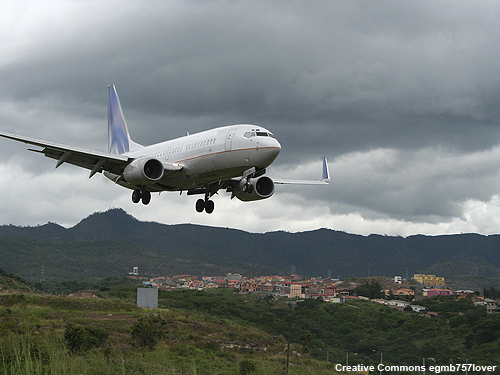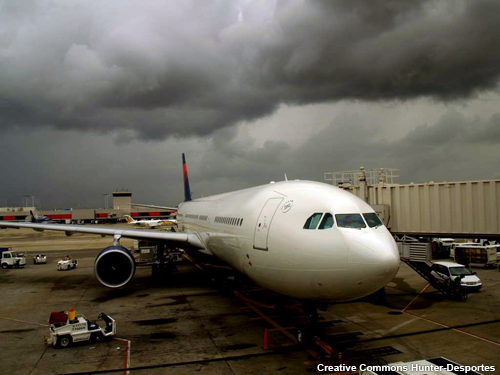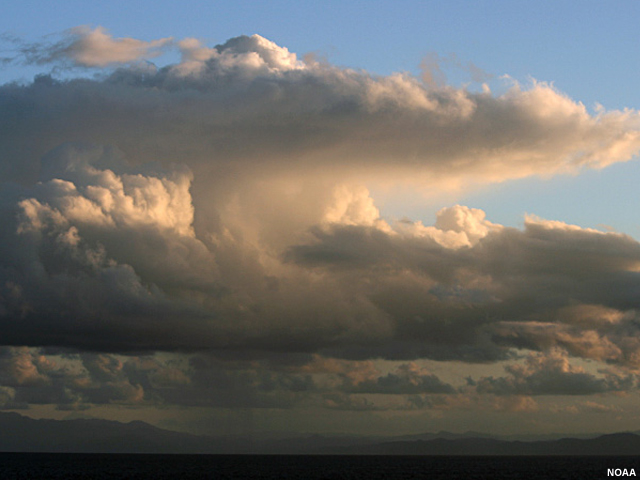Observing Cloud Type and Height

You should determine the height of each layer aloft using the most accurate means available--balloon, pilot report, etc. The ceiling height is a particularly important value and refers to the base height of the lowest broken or overcast layer or the vertical visibility into a surface-based obscuration.

You can determine the ceiling height based on:
- comparison to the height of visible portions of nearby ships or land masses
- the vertical distance you can see upward into an obscuration
- the height at which a balloon completely disappears

Layer heights should be reported in feet above the sea surface. For layer heights less than 5000 feet, report the value to the nearest 100 feet. Between 5000 feet and 10,000 feet, the layer height should be reported to the nearest 500 feet, and above 10,000 feet, the height will be reported to the nearest 1000 feet.

Sometimes it can be difficult to distinguish a particular cloud type and height. If cumulus or cumulonimbus are present and are attached to a parent cloud, the expanding convective clouds are regarded as a separate layer only if their bases appear horizontal and at a different level than the base of the parent cloud. Otherwise, the entire cloud system is regarded as a single layer at a height corresponding to the height of the base of the parent cloud.